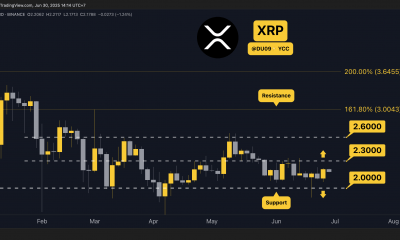Commodities
Oil prices and the recession graph: What will happen to oil prices this week?

The price of Brent, which fell to nearly $92 a barrel on Tuesday, came close to $97 a barrel on Friday. The U.S. DOE report showed a 7.1 million-barrel decline in commercial and a 3.4 million-barrel decline in strategic crude inventories, or 1.2%, for a total of 10.5 million barrels.
The main factor was the increase in oil exports to a new record of 5.0 million barrels per day (mb/d). U.S. net oil imports fell to an all-time low of 1.1 mb/d as a result. U.S. oil production estimates also fell by 0.1 mbps to 12.1 mbps. However, fluctuations in export and import flows from week to week are temporary factors that cannot support the price of oil for long.
Oil and gas quotes – what’s happening in the market?
Demand for petroleum products in the U.S. is a much more important driver. U.S. gasoline shipments rose 2.5% over the previous week and 0.2% year-to-date to 9.35 mbps, also 3.1% above the four-week average. As a result, gasoline inventories fell by 4.6 million barrels, or 2.1%. Gasoline supplies provide an indication of the dynamics of demand. They have declined year-over-year for nine consecutive weeks, with a 13% drop twice in July. Therefore, even a slight increase in apparent demand is perceived by the market with optimism.
Oil prices strengthened as gas prices rose rapidly to new records: the monthly TTF contract closed Friday at about $2,600 per thousand cubic meters, adding 19% over the week.
In terms of energy units, gas is now more than four times more expensive than oil in Europe. This is why everywhere possible, gas is being replaced by oil products – particularly in the energy and petrochemical industries. The total volume of substitution is not great, but it is enough for gas prices to start “pulling up” oil prices.
This dependence will continue to affect the oil market in the coming weeks. That is why, he said, “we are not expecting a sharp drop in oil prices while gas in Europe is trading above $2,000 per thousand cubic meters. Analysts forecast that Brent will stay above $95 per barrel in the new week.
At the same time, the alarming dynamics of diseases and quarantines in China limit the potential for oil growth. The new outbreak in Hainan province is likely to be localized, but the experience of the last months suggests a high probability of new outbreaks. Therefore, the forecast is a $95-100 range for Brent over the coming week.
Earlier we reported that a fall in Brazil’s harvest will trigger a rise in black coffee prices.
Commodities
Oil prices rise; U.S. crude inventories plunge, Russia-Ukraine truce eyed
Commodities
India’s Reliance to stop buying Venezuelan oil over US tariffs, sources say
Commodities
Oil prices climb on Venezuela supply worries

 Forex3 years ago
Forex3 years agoForex Today: the dollar is gaining strength amid gloomy sentiment at the start of the Fed’s week

 Forex3 years ago
Forex3 years agoUnbiased review of Pocket Option broker

 Forex3 years ago
Forex3 years agoDollar to pound sterling exchange rate today: Pound plummeted to its lowest since 1985

 Forex3 years ago
Forex3 years agoHow is the Australian dollar doing today?

 Cryptocurrency3 years ago
Cryptocurrency3 years agoWhat happened in the crypto market – current events today

 World3 years ago
World3 years agoWhy are modern video games an art form?

 Commodities3 years ago
Commodities3 years agoCopper continues to fall in price on expectations of lower demand in China

 Economy3 years ago
Economy3 years agoCrude oil tankers double in price due to EU anti-Russian sanctions





























